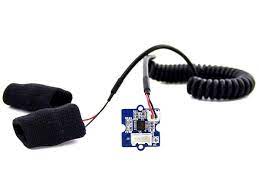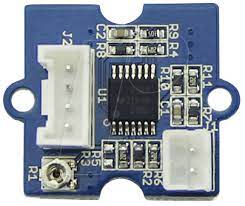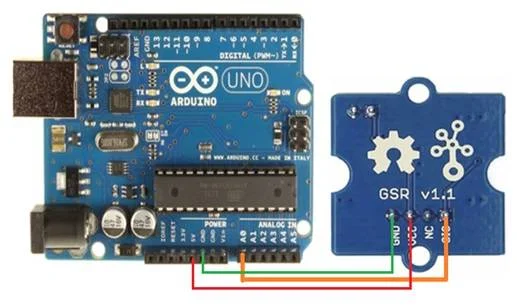

Description
GSR stands for galvanic skin response, is a method of measuring the electrical conductance of the skin. Strong emotion can cause stimulus to your sympathetic nervous system, resulting more sweat being secreted by the sweat glands. Grove - GSR allows you to spot such strong emotions by simple attaching two electrodes to two fingers on one hand. It is an interesting to create emotion related projects like sleep quality monitor.
Specification
| Parameter | Value/Range |
|---|---|
| Operating voltage | 3.3V/5V |
| Sensitivity | Adjustable via a potentiometer |
| Input Signal | Resistance, NOT Conductivity |
| Output Signal | Voltage, analog reading |
| Finger contact material | Nickel |
Hardware
The GSR sensor requires 5V for its operation. The data is acquired within range of 1 to 10 Hz. GSR signal is based on conductance which is inverse to skin resistance. Refer working operation of GSR Sensor.

Following table mentions connections between GSR sensor and Arduino board.
| GSR Sensor | Arduino Uno Board |
|---|---|
| VCC | 5V |
| GND | GND |
| SIG | A0 |
GSR Sensor Interfacing With Arduino Code
Following is the arduino code to interface GSR sensor with arduino UNO or Arduino Mega board. Once this code is compiled and run, it reads the sensor value from GSR sensor at analog pin A0 of arduino board. The code reads the analog data (in the range from 0 to 1023) and convert it to analog voltage in the range from 0 to 5 V. The converted voltage is displayed on the serial monitor. The serial communication speed is set initially to 9600 bps.
const int LED=13;
const int GSR=A0;
int sensorValue;
void setup()
{
Serial.begin(9600);
pinMode(LED,OUTPUT);
digitalWrite(LED,LOW);
delay(1000);
}
void loop()
{
int temp;
float conductivevoltage;
sensorValue=analogRead(GSR);
conductivevoltage = sensorValue*(5.0/1023.0);
Serial.print("sensorValue=");
Serial.println(sensorValue);
delay(100);
}


